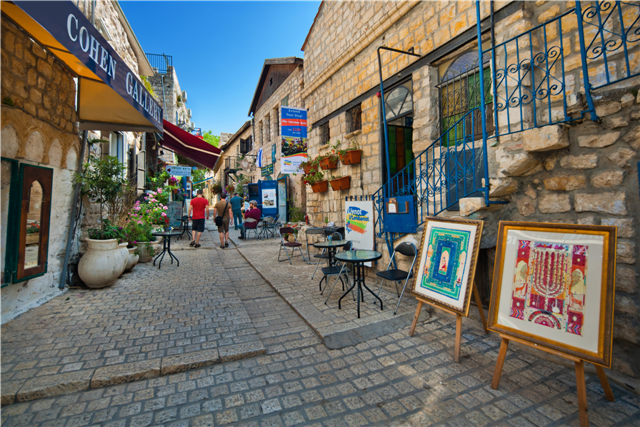
When you think of Northern Israel, you may picture taking in beautiful vineyards, hiking in the Golan Heights or swimming in the Kinneret, and you would be correct. But Northern Israel also has a lot to offer those looking to learn more about Israel's history. When you get worn out from all the outdoor recreational activities the area has to offer, we recommend visiting these sites.
Tsefat, an ancient Galilean city, has the highest elevation of any city in Israel. With its fresh mountain air, cobblestone streets and unique architecture, Tsefat is truly unlike anywhere else on earth. In addition to boasting gorgeous views, it is the center of Kabbalah (Jewish mysticism) and Israeli art. Appropriately, strolling through Tsefat, visitors often feel like they're in a beautiful painting.
The Ceasarea National Park, with its ancient amphitheater, stadium and port, make visitors feel as though they have stepped back in time to when the city was the Roman capital of Palestine. Other features include an intricate 5th century bird mosaic, a Roman aqueduct, and a lovely public beach, along with charming galleries and restaurants.
Acre, the city itself a UNESCO World Heritage Site, was one of the region's most important cities in ancient times. The city's fascinating history is apparent in so many of its historical sites- Turkish baths, halls built by the Knights Templar, even its market, which has some of the best hummus in all of Israel, is a historical landmark.
Maimonides' Tomb, located in central Tiberias, has become an important pilgrimage site for the Jewish people. As a physician and Torah scholar, and creator of the ancient Jewish equivalent of the Hippocratic Oath, Maimonides (also known as Rambam) is one of Judaism's most influential figures.
The Kinneret Cemetery is the burial place of some of the most historic figures in Zionist history. Among the many people of note buried here are Berl Katznelson, Naomi Shemer, and Moshe Hess. Perhaps the best known person buried here is the poet Rachel. Next to her gravesite is a bench where visitors can pull out a book of her poetry and read it by the edge of the lake.

